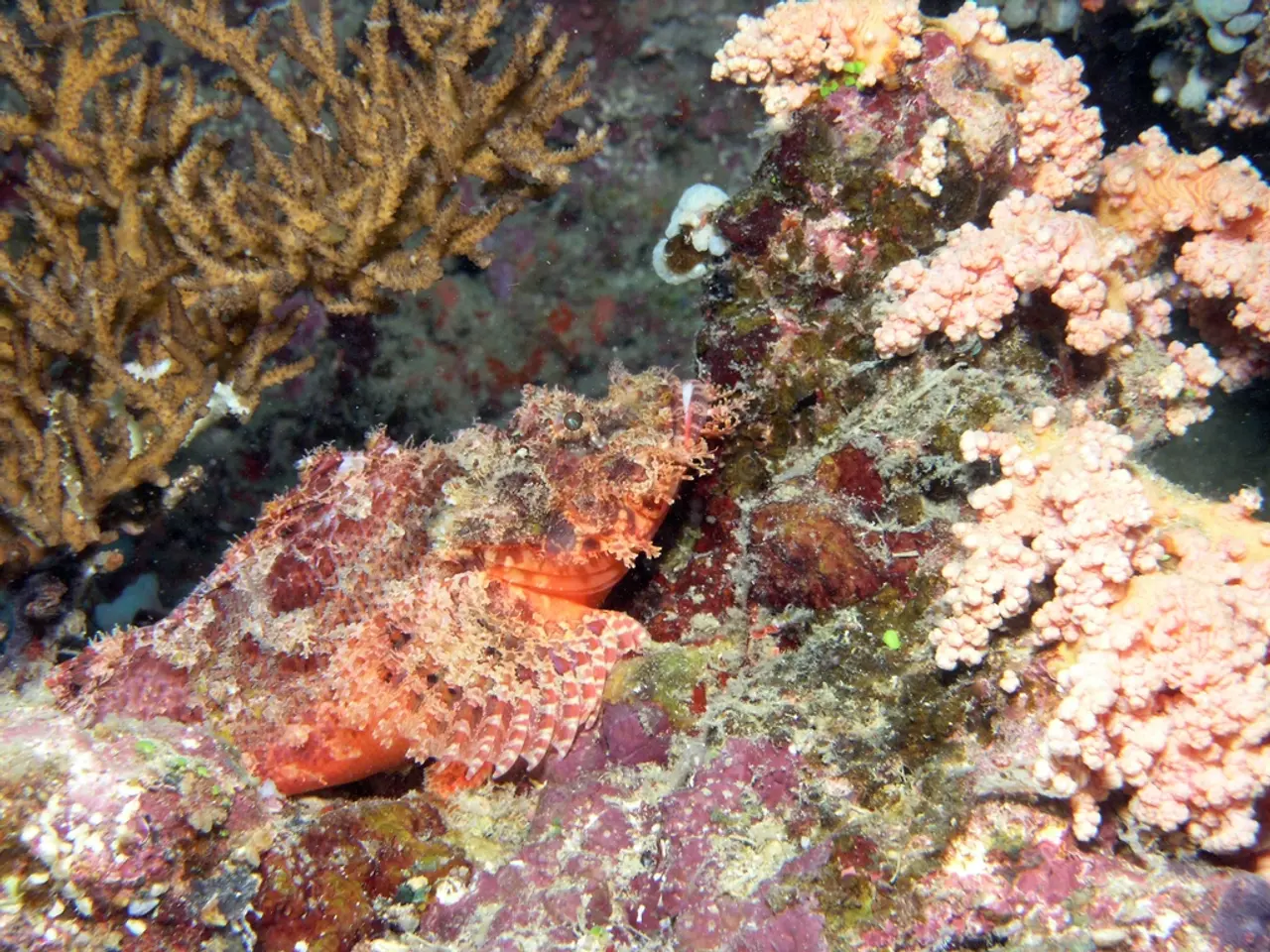Increased ocean acidification triggers demands for immediate marine conservation measures
The world's oceans are facing mounting pressure from various stressors, and the need for urgent action to protect them has never been more urgent. Following the 2025 UN Ocean Conference and the ratification of the Agreement on Marine Biological Diversity of Areas beyond National Jurisdiction, there is building momentum for marine protection.
Experts are urging the need for immediate steps to safeguard the world's oceans from all forms of exploitation, as the high seas treaty may take years to put into action. Rising ocean acidification levels, caused by high carbon dioxide emissions, have caused significant declines in habitat for some calcifying creatures, such as tropical and subtropical coral reefs, polar pteropods, and coastal bivalves.
Current levels of acidification are not an immediate death knell for ocean life, but they are concerning when factored in with other stressors like climate change, marine heatwaves, declining ocean oxygen levels, eutrophication, overfishing, and pollution. Four of the seven ocean basins have crossed the planetary boundary for ocean acidification.
To address this pressing issue, current strategies primarily focus on addressing the root cause—carbon emissions—and implementing local to global actions for mitigation and adaptation. The primary solution endorsed by experts is to drastically cut fossil fuel emissions to lower atmospheric CO2 levels and thus reduce ocean uptake of CO2, which causes acidification.
Beyond emission cuts, achieving net zero or net negative CO2 emissions is critical. This includes developing carbon dioxide removal (CDR) technologies both on land and in marine environments, although many such methods remain experimental and require further testing and scaling.
Novel geoengineering methods, such as ocean alkalinity enhancement and electrochemical approaches, show promise in counteracting acidification by directly altering seawater chemistry. However, these methods have uncertain ecological consequences and need comprehensive evaluation before widespread deployment.
Local and regional action plans, such as Ocean Acidification Action Plans, integrate acidification concerns into broader climate and ocean management policies. These plans emphasize scientific monitoring, policy integration, educational initiatives, and promotion of natural solutions to slow acidification impacts locally.
Sustainable aquaculture and ecosystem-based approaches, like expanding seaweed cultivation, are gaining traction as a nature-based solution that can sequester CO2, enhance biodiversity, and improve carbon storage in coastal ecosystems.
The Paris Agreement, while primarily a climate change treaty, plays a crucial role in limiting ocean acidification due to its carbon emission reduction targets. The urgency to meet these targets has been emphasized due to acidification's persistent and long-term impacts.
The 2025 UN Ocean Conference featured the launch of Ocean Acidification Action Plans by various countries and indigenous groups, reinforcing commitments to monitor and mitigate acidification through partnership and policy innovation. Cross-sector global alliances like the Ocean Acidification Alliance promote cooperation among nations, indigenous peoples, scientists, and policymakers to foster coordinated responses and knowledge sharing on acidification threats and mitigation strategies.
Researchers warn that the window to keep warming below the 1.5°C (2.7°F) Paris Agreement target is rapidly closing, with only three years left. They propose a 10% aragonite saturation safe limit to ensure the functional integrity of ocean ecosystems. Experts agree that the number one solution to address ocean acidification is to aggressively tackle its root cause—the continuing carbon emissions driving the uptake of CO2 in the oceans.
However, for some critical marine ecosystems, additional adaptation or mitigation approaches may be necessary beyond reducing CO2 emissions, according to Nina Bednarsek. The acidification problem worsens as one looks deeper below the ocean's surface, with 60% of the world's ocean having crossed the safe limit down to 200 meters depth.
Sylvia Earle and other scientists argue that 30% protection is not enough for the high seas and call for a halt to 100% of high seas overexploitation with industrial fishing and industrial trawling, and a ban on deep-sea mining. The international agreement aims to protect 30% of the world's oceans by 2030 and establish legal mechanisms for high seas areas.
In summary, the current global approach to reducing ocean acidification relies heavily on cutting carbon emissions in line with international climate commitments, developing and carefully testing innovative geoengineering and nature-based solutions, and implementing localized action plans within a framework of international cooperation and policy integration to effectively safeguard marine ecosystems from ongoing acidification.
- Experts are urging the immediate need to safeguard the world's oceans from exploitation, considering climate change, sea-level rise, and ocean acidification pose significant threats to biodiversity, health-and-wellness, and environmental-science alike.
- To achieve net zero CO2 emissions, experts endorse drastically cutting fossil fuel emissions, lowering atmospheric CO2 levels, and reducing ocean uptake of CO2 to combat ocean acidification, a problem that worsens with depth, according to Nina Bednarsek.
- The Paris Agreement, in addition to its climate change targets, plays a crucial role in limiting ocean acidification, as the urgency to meet these targets has been emphasized due to acidification's persistent and long-term impacts on medical-conditions and health-and-wellness.
- Local and regional action plans, like Ocean Acidification Action Plans, integrate acidification concerns into broader climate and ocean management policies and promote education, natural solutions, and partnerships to mitigate acidification's effects on biodiversity and marine-ecosystems.
- In alignment with the SDGs, Sylvia Earle and other scientists advocate for a halt to 100% of high seas overexploitation, industrial fishing, industrial trawling, and deep-sea mining to ensure the protection and conservation of marine life, preserving biodiversity and promoting health-and-wellness for future generations.




